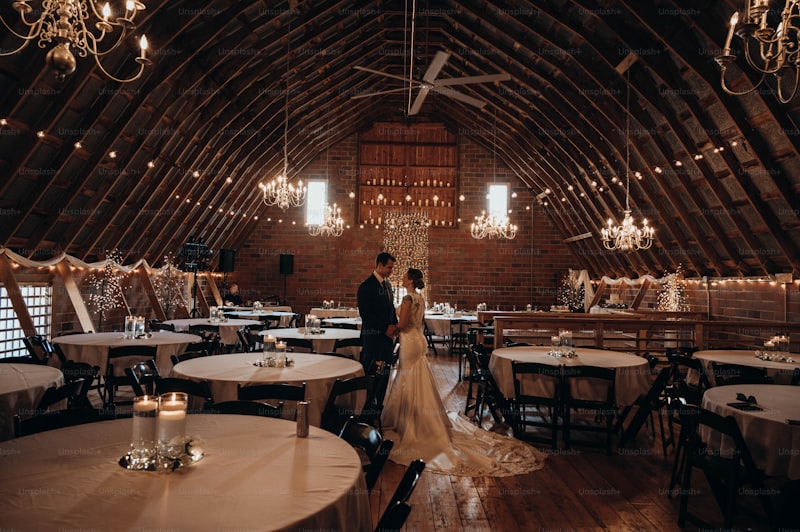Understanding the Percentage of Wedding Spend: A Comprehensive Guide
Understanding the Percentage of Wedding Spend: A Comprehensive Guide
Introduction
Planning a wedding can be one of the most exciting yet overwhelming tasks in life. With numerous elements to consider—from the venue to the guest list and everything in between—understanding the percentage of wedding spend is crucial for creating a realistic budget. This guide provides insights into how much couples typically spend on various wedding components, and how you can allocate your funds wisely.
The Importance of Budgeting Your Wedding
Setting a budget is essential to prevent overspending and to ensure that your wedding day truly reflects your style and preferences. By breaking down the expenses into percentages, it becomes easier to make informed decisions about where to splurge and where to save.
Typical Breakdown of Wedding Expenses
On average, couples spend around $34,000 on their weddings. However, this amount can vary greatly depending on the location, size, and type of wedding. Here’s a general breakdown of the percentage of wedding spend:
| Wedding Expense | Typical Percentage of Total Budget |
| Venue | 30% |
| Catering | 20% |
| Photography/Videography | 10% |
| Attire (Bride and Groom) | 10% |
| Flowers | 8% |
| Music/Entertainment | 8% |
| Stationery | 2% |
| Wedding Planner | 5% |
| Miscellaneous | 7% |
Breaking Down Wedding Costs
1. Venue (30%)
The venue usually takes up the largest chunk of the wedding budget. This includes the cost of renting the space and any additional fees. Depending on the location—whether it's a city-based venue or a picturesque countryside estate—the venue pricing can vary significantly.

2. Catering (20%)
Catering costs can also vary widely, depending on whether you choose a formal sit-down dinner, buffet, or food stations. Additionally, don't forget to consider beverages, including alcohol, which can often escalate the total catering bill.
3. Photography/Videography (10%)
Capturing those special moments is incredibly important, and a good photographer/videographer can make all the difference. This proportion of your budget ensures that you'll have high-quality images and videos to cherish for a lifetime.
4. Attire (10%)
Your wedding attire, including wedding dresses, suits, accessories, and shoes, typically accounts for around 10% of your budget. Purchasing pre-loved dresses or renting attire can help you save money here.
5. Flowers (8%)
While flowers play an essential role in décor, this category also includes bouquets, boutonnieres, and centerpieces. DIY arrangements can help you save on florist fees.
6. Music/Entertainment (8%)
Whether you choose a band, a DJ, or other forms of entertainment, this portion covers your musical needs. Booking local talent can help lower costs without sacrificing quality.
7. Stationery (2%)
Invitations, save-the-dates, and thank-you cards fall under this category. You can save money by designing your stationery digitally or opting for templates.
8. Wedding Planner (5%)
A wedding planner can significantly ease the planning process and help to keep your budget on track. However, some couples prefer to plan independently to save costs.
9. Miscellaneous (7%)
This category can cover unexpected expenses such as permits, marriage licenses, transportation, and more. Always allocate a portion of your budget for miscellaneous fees that may arise.
Common Questions About Wedding Expenses
1. How can I save on my wedding budget?
Consider having a smaller guest list, opting for off-peak wedding dates, or making use of far-off family venues. This could significantly reduce the overall costs.
2. Should I stick to traditional wedding expenses?
While traditional expenses can provide a guideline, you should always personalize your wedding in a way that suits your values and preferences. Don't hesitate to allocate funds in ways that reflect what is truly important to you.
3. How much should I realistically budget for each category?
Conduct research based on your location and desired wedding style to create tailored percentage allocations. Be flexible with adjustments as needed.
Final Thoughts
Understanding the percentage of wedding spend is vital for effective budget management. With careful planning, you can enjoy your special day without financial stress. Remember to prioritize what matters most to you and your partner. Additionally, consider contacting vendors to inquire about packages that might suit your budget, and always leave a little wiggle room for the unexpected. Happy planning!
